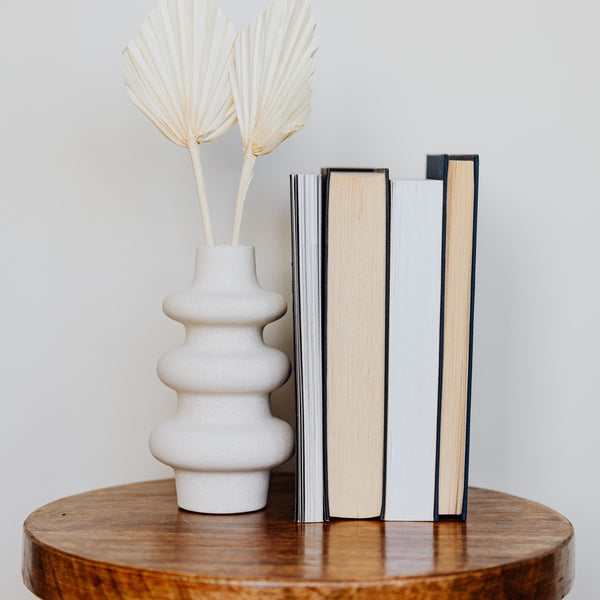Learn to Fly - An Exploration of Lucid Dreaming

“Dreams are today's answers to tomorrow's questions.” ~Edgar Cayce
Come evening time, the lights go out and you surrender to the night… Unlike waking life, the subconscious realm is limitless. Blissful. Terrifying. Sometimes it’s just plain weird. Dreams are often surprising. They can be intricate and mind-boggling to decode. Especially, since most of what happens seems beyond your control. Unless, you’re lucid dreaming. Also, known as oneironautics, lucid dreaming is pretty much what it sounds like: being conscious within a dream. Researchers have been studying the hows, whats, and whys, of oneironautics for decades. Still, if you aren’t familiar with the idea of being awake inside a dream, the concept might seem fantastical.

Along with the ability to play and daydream, children often experience lucid dreams. Unfortunately, as they mature, kids usually lose that gift. Throughout the ages, there have always been people who experienced lucid dreams. Legendary French artist Marc Chagall was famous for his surrealist paintings of figures, often lovers, flying, in what appeared to be various dream worlds. Chagall’s fascination with the dream state, suggests he might possibly have been a lucid dreamer himself.
Normally, you’re powerless in dreams. Imagine if you could alter the experience… Instead of being a passenger on a ride through the hidden doors of your psyche, you were wide awake. Suppose you had the miraculous ability to chart your own course… In a sense, you would be like an artist, painting a picture, and then… stepping directly into it. Or more like, sleeping into it. Think of all the hours you spend asleep… Instead of staying in the dark, lucid dreaming can offer insights into your hidden thoughts and feelings. According to the book,“A Field Guide to Lucid Dreaming,” written by filmmakers, Dylan Tuccillo, Jared Zeizel and Thomas Peisel, there are practical techniques you can learn that show you how to lucid dream. This unique kind of mindfulness practice, involves certain core principals. Once you integrate them into your daily consciousness, they carry over into dreamland.
To learn the art of lucid dreaming read on…
Increase Mindfulness

Tuccillo, Zeizel, and Peisel, advise you, “look for awareness in your dreams.” Begin by optimizing the hours before sleep… Going to bed calm is crucial. Why? It helps clarify dream recall in the morning. And since, “the mind doesn't know the difference between a thought and action,” Tuccillo, Zeizel, and Peisel, say it’s crucial to visualize yourself successfully having a lucid dream: use vivid sensory detail. Additionally, it’s important to “feel a sense of gratitude that you’ve experienced a lucid dream before having one,” says, Tuccillo, Zeizel, and Peisel.
Reality Checks
Lucid dream experts, Tuccillo, Zeizel, and Peisel, say, “lucid dreams are triggered by some sort of inconsistency, something that suddenly causes the dreamer to stop and question his or her reality.” So… a crucial step to learn how to wake up inside a dream, involves conditioning your mind to determine the real from the imagined. And that’s not always apparent. Especially in dreamland. One way to become more aware, according to Tuccillo, Zeizel, and Peisel, is to create a habit of regular “reality checks.” How do you do it? Pause throughout the day to ask yourself: “am I dreaming?” or something similar, 5 to 10 times a day. Tuccillo, Zeizel, and Peisel, say, “As you pose the question, perform a physical check as well.” This could be any prompt you see, such as seeing a tree, streetlight, or a dog. It may sound silly. But it’s actually a brilliant way to get yourself into the habit of questioning reality. And it naturally carries over to your dreams.
The Power of Intention

Tuccillo, Zeizel, and Peisel suggest using a simple phrase in harmony with your chosen intention, such as, “I am aware and lucid in my dream.” Be mindful not to cloud your thoughts before falling asleep. Allow time for quiet reflection. Tuccillo, Zeizel, and Peisel, advise you “cultivate a strong desire to lucid dream and make such desires your dominant thoughts before bed.” These lucid dream experts emphasize simplicity and repetition. They say each affirmation, “should be brief and straightforward,” something like, “I remember my dreams,” will do the trick. And as you get progressively sleepy, repeat it softly while you drift off.
Don’t vary when you fall asleep. Tuccillo, Zeizel, and Peisel, advise, “go to bed at the same time every night.” A routine helps you, “have more consistent sleep cycles, which will come in handy later for inducing lucid dreams,” says Tuccillo, Zeizel, and Peisel.
Rewriting The Dream

In the words of Dr. Carl Jung, “Until you make the unconscious conscious, it will direct your life and you will call it fate.” When it comes to deciding your next move in dreamland, don’t focus on the external. Instead, turn the dial on yourself. Tuccillo, Zeizel, and Peisel, discuss the power of emotion when dreaming; negative emotions may cause a nightmare to intensify. So they say it’s important to change your own energy and feelings. While inside a lucid in a dream, Tuccillo, Zeizel, and Peisel, recommend using that awareness to generate feelings of love and positivity, even within the confines of a nightmare. Take the fear out of a nightmare and you’ll diffuse it. That may seem daunting for a normal nightmare… However, once you realize a dream isn’t real, you open yourself to a world of new possibilities.
Keep a Dream Diary

A dream diary is nothing new. Although, Tuccillo, Zeizel, and Peisel, use it as a tool to strengthen dream memory recall. This helps develop your ability to lucid dream. Their method sounds more like dream storytelling… They advise: keep the journal beside your bed. Record the date and time. Also, write keywords that you can elaborate on later. And interestingly, even though you’re writing after the dream occurred, Tuccillo, Zeizel, and Peisel want you to write about the experience in “present tense.” Additionally, after you jot them down,“title your dreams.” Do it in a natural way that encapsulates the essence of the journey.
In addition, Tuccillo, Zeizel, and Peisel ask you to keep track of your progress also. In the journal, note whether you were lucid or not in each dream on the top left hand corner or the page. And to further increase awareness, they say, “Write down what triggered your lucidity, how long it lasted, what you did, and any useful tips.” And don’t forget to enjoy the dream journey. Most important, Tuccillo, Zeizel, and Peisel, want you to “Have fun with your dream journal it's a book of your experiences from another dimension.”



